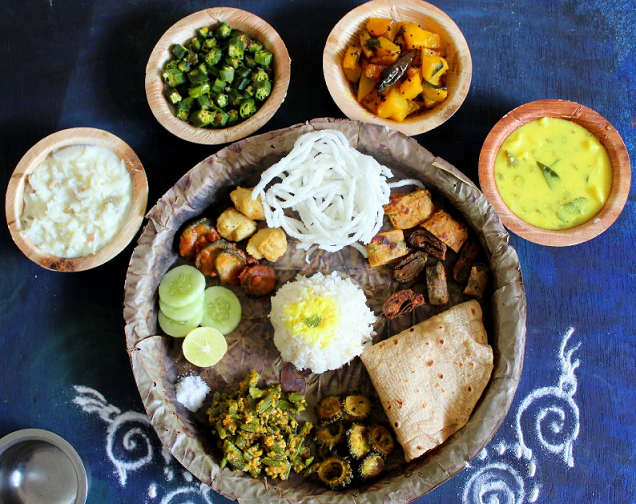Rituals and Traditions of Pitru Paksha
rituals and traditions observed during Pitru Paksha, the fortnight of the ancestors.
1. Tarpana (Offerings of Water): Tarpana is one of the most fundamental rituals during Pitru Paksha. It involves offering water mixed with black sesame seeds, barley, and sometimes rice to the deceased ancestors. This ritual is typically performed by male members of the family facing south while standing in a river or water body. It is believed that offering water helps satisfy the thirst of the departed souls.
2. Shraaddha Ceremony: The Shraaddha ceremony is a central aspect of Pitru Paksha. It involves offering food to ancestors. Families prepare a special meal that includes various dishes like rice, lentils, vegetables, sweets, and fruits. This food is then offered on banana leaves or specific plates to represent the ancestors. The person performing the Shraaddha ceremony offers prayers and mantras while making these offerings. After the ritual, the food is given to priests or Brahmins and is sometimes shared among family members.
3. Pinda Daan: Pinda Daan is another crucial ritual during Pitru Paksha. It involves making rice balls mixed with sesame seeds and offering them to the deceased ancestors. Each rice ball represents an ancestor. This ritual is performed at pilgrimage sites, such as Varanasi, where it is believed that the souls of the ancestors attain salvation more easily.
4. Pitru Tarpana: In addition to offerings for immediate ancestors, Pitru Tarpana is performed to honor all departed souls from previous generations. This is done by offering water and prayers to ancestors beyond one’s grandparents. It is believed that by doing so, one helps relieve the souls of all ancestors and not just those recently deceased.
5. Mahalaya Amavasya: The New Moon day during Pitru Paksha, known as Mahalaya Amavasya, is considered especially auspicious. On this day, people wake up early and offer special Tarpana to their ancestors. Many also listen to the recitation of the Mahalaya Mantras and stories of Pitru Paksha, such as the story of Karna, to invoke blessings for their forefathers.
6. Feeding the Poor: Alongside the rituals dedicated to ancestors, many families also perform acts of charity during Pitru Paksha. Feeding the poor and giving alms to those in need is considered a virtuous act during this period. It is believed that by doing so, one earns merit that can benefit both the living and the deceased.
7. Avoidance of Non-Vegetarian Food: Many Hindu families choose to abstain from consuming non-vegetarian food during Pitru Paksha as a mark of respect for the deceased. This period is regarded as a time for spiritual reflection and purification.
8. Visiting Ancestral Villages: Some individuals make pilgrimages to their ancestral villages or towns during Pitru Paksha to perform rituals at the ancestral shrines and visit the resting places of their forefathers.
9. Prayers and Mantras: Throughout Pitru Paksha, people recite prayers and mantras dedicated to their ancestors. These chants are believed to invoke the blessings of the departed souls and help them progress on their spiritual journey.
Pitru Paksha concludes on the New Moon day (Amavasya) of the lunar month of Bhadrapada. On this day, a final Shraaddha ceremony is performed to bid farewell to the ancestors and seek their blessings for the coming year.
These rituals and traditions during Pitru Paksha are performed with deep reverence and devotion, emphasizing the importance of honoring and remembering one’s ancestors and seeking their well-being and spiritual progress.


